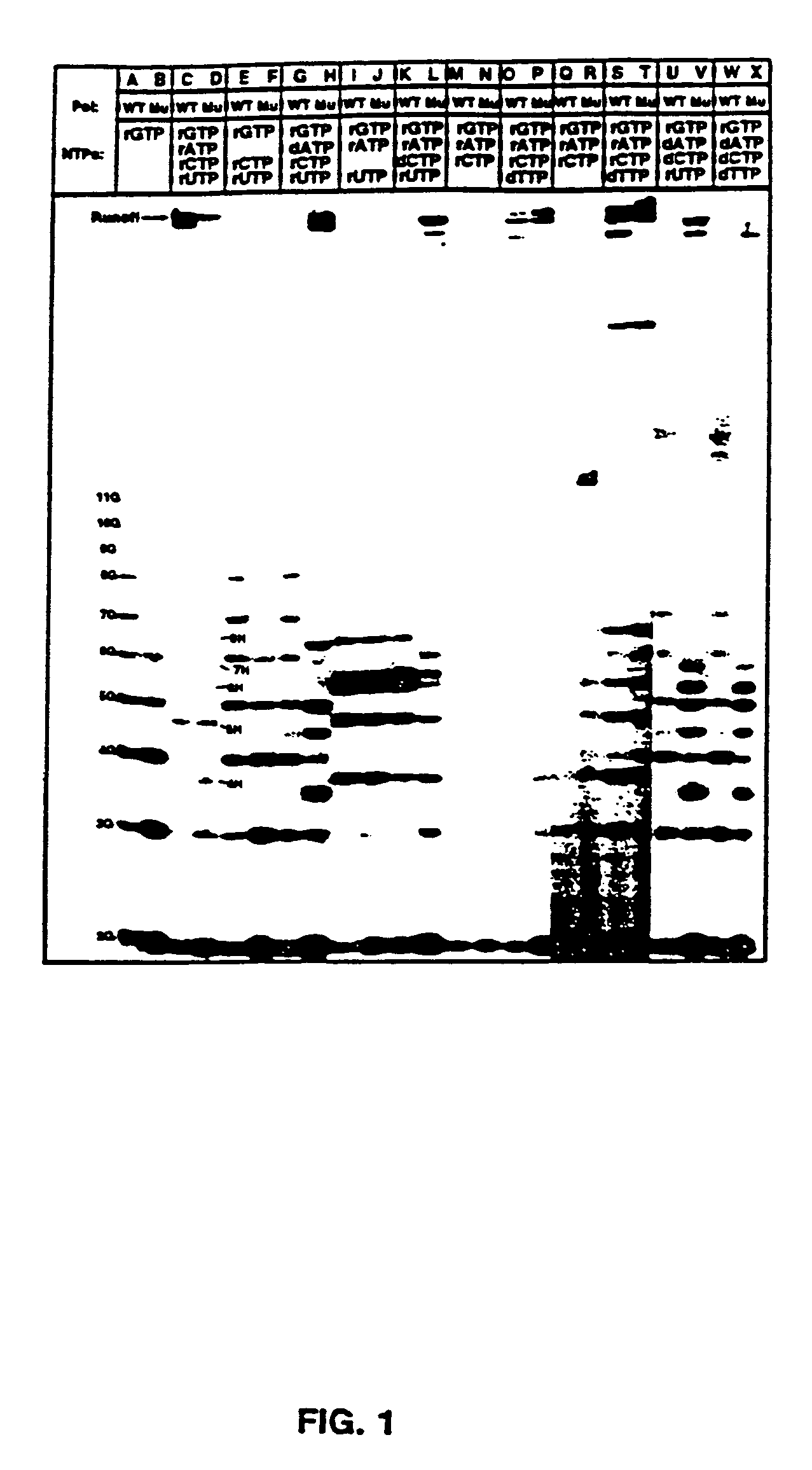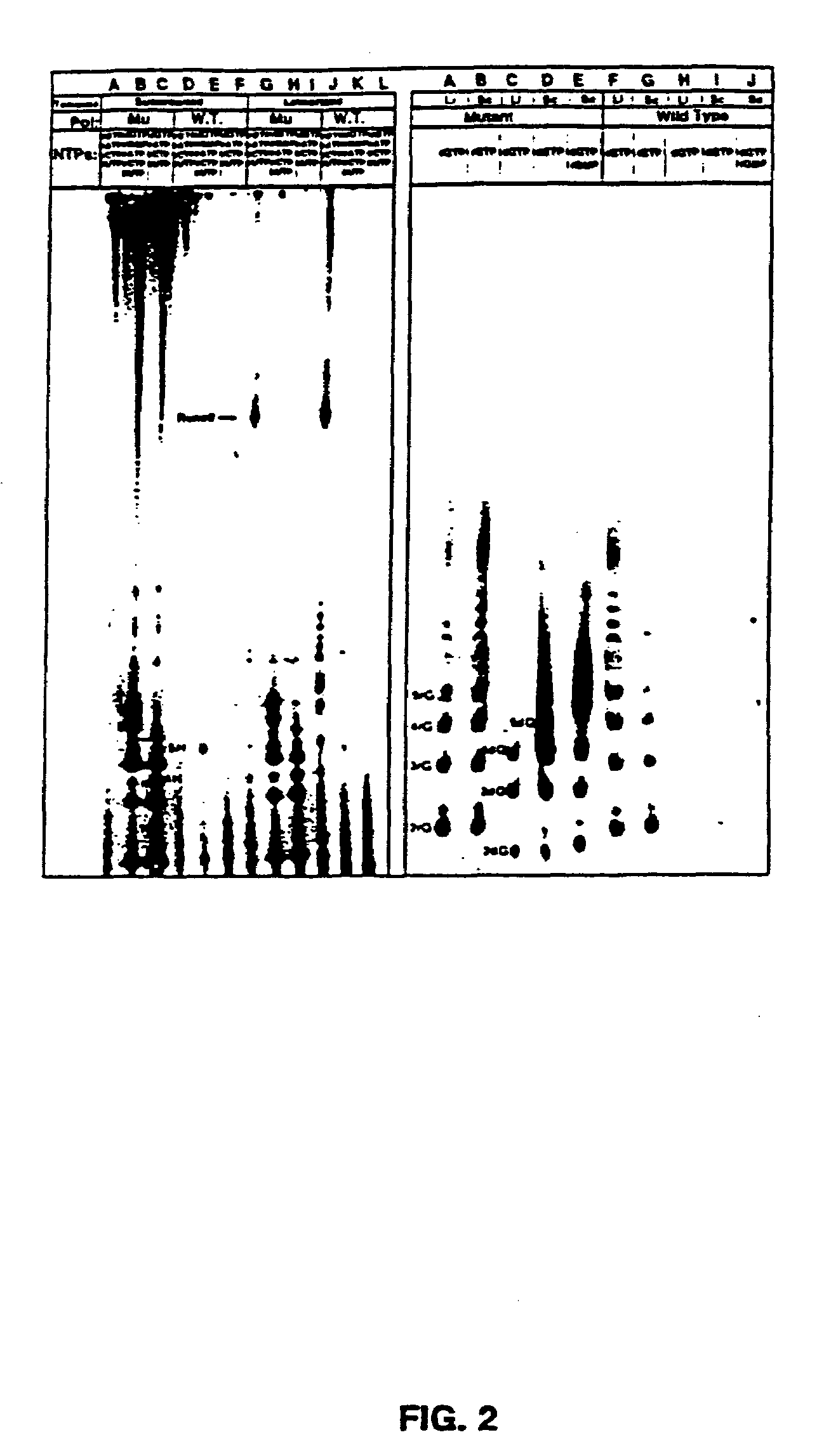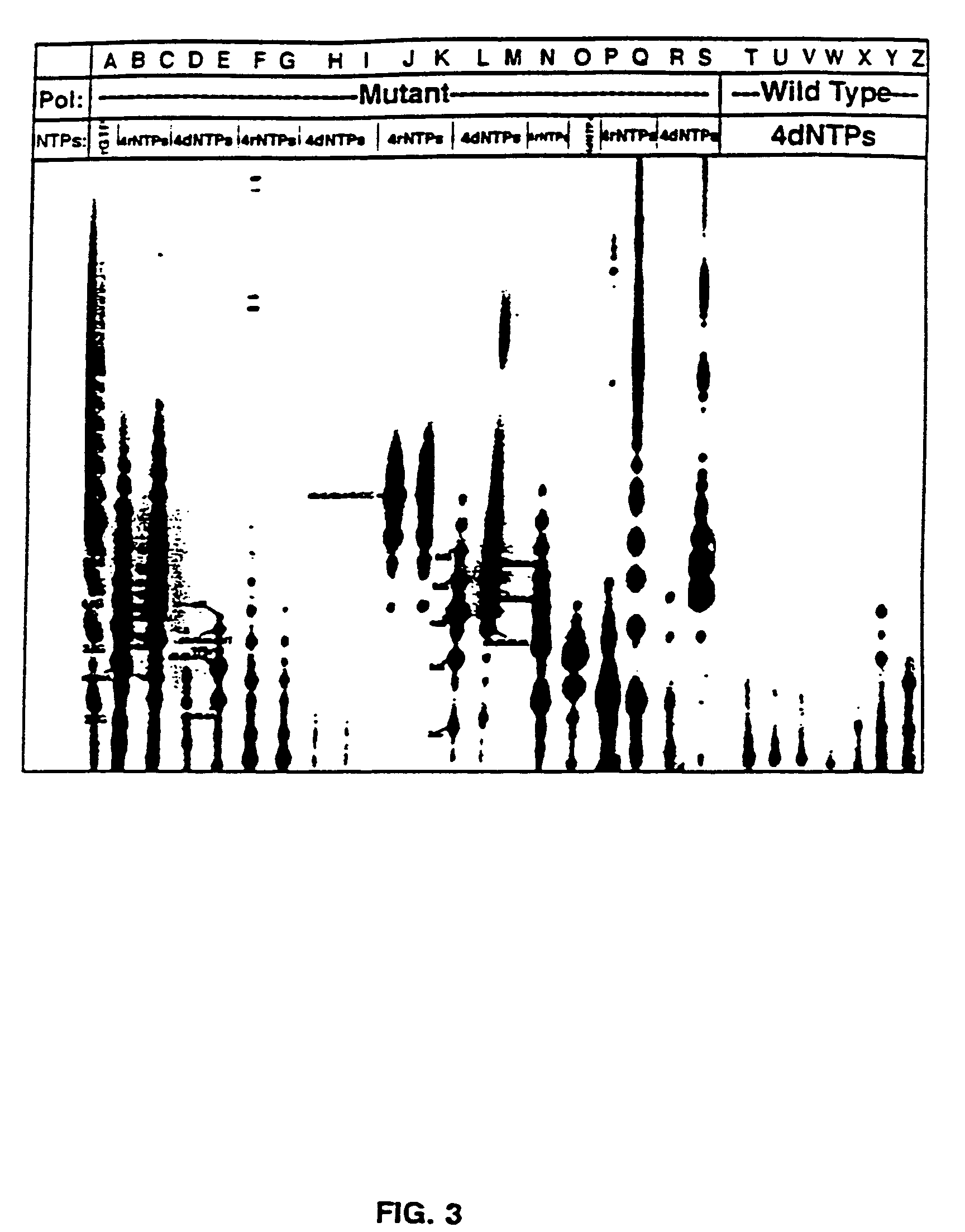Methods for using double-mutant RNA polymerases with reduced discrimination between non-canonical and canonical nucleoside triphosphates
a nucleoside triphosphate and double-mutant technology, applied in the field of methods for using double-mutant rna polymerases with reduced discrimination between non-canonical and canonical nucleoside triphosphates, can solve the problems of polymerases that can display novel activities, albeit with reduced efficiency and/or under non-physiological conditions, and none of these techniques are commonly used at presen
- Summary
- Abstract
- Description
- Claims
- Application Information
AI Technical Summary
Benefits of technology
Problems solved by technology
Method used
Image
Examples
example 1
Creation and Characterization of a Mutant T7 RNA Polymerase
A. Materials and Methods
[0096]Nucleic acids and NTPs: Nucleotides were from Pharmacia or USB / Amersham. Polynucleotides were from Pharmacia and the Midland Certified Reagent Company. Synthetic DNAs were prepared at the UTHSCSA DNA synthesis facility on an Applied Biosystems DNA synthesizer and purified by HPLC. A synthetic RNA 12mer was from the Midland Certified Reagent Company. Plasmids pT75 (Tabor and Richardson, 1985) and pBS (Stratagene Inc.) were purified from E. coli by alkaline-lysis and cesium chloride gradient centrifugation (Sambrook, et al., 1989). Radioactive nucleotides were from NEN Dupont or ICN.
[0097]Preparation and purification of mutant polymerases: Construction, expression, and purification of the T7 RNAP mutants was described previously (Bonner, et al., 1992).
[0098]Transcription reactions: Transcription reactions were carried out in 40 mM Tris-Cl pH 8.0, 15 mM MgCl2, and 5 mM DTT or 20 mM Manganese Citrat...
example 2
A Mutant SP6 RNA Polymerase as a DNA Polymerase
[0157]After the observations made above with T7 RNAP, bacteriophage SP6 RNA polymerase was examined to determine whether the DNA synthesis properties observed for the mutant T7 RNAP could, as expected, be extended to other mutant polymerases. Bacteriophage SP6 is a lytic phage which infects the bacterial species Salmonella tryphimurium (Butler and Chamberlin, 1982). SP6 phage resembles E. coli phage T7 and their genomes are comparable in size, gene organization and pattern of gene expression (Kassavetis, et al., 1982).
[0158]The phage encoded RNA polymerases are very similar in size (Butler and Chamberlin, 1982) and amino acid sequence (Katani, et al., 1987).
[0159]The homologous tyrosine at position 639 in T7 RNA polymerase is readily identified at position 631 in SP6 RNA polymerase (FIG. 7). Substitution of tyrosine 631 with phenylalanine in the SP6 RNA polymerase was expected to confer the same phenotypic changes in catalytic propertie...
example 3
Activity and Uses of Phage RNA Polymerases With Second Mutations Comprising an Alternative Amino Acid in Place of the Histidine at the Position Corresponding to H784 of T7 RNAP for Synthesis of RNA Containing Non-Canonical Nucleotides
Background
[0164]RNAPs that incorporate non-canonical nucleotides are useful for making RNA molecules for a variety of applications, including, but not limited to, applications previously described herein. In one preferred embodiment, mutant RNAPs are used for synthesis of RNA molecules containing non-canonical nucleotides for use as probes for nucleic acid arrays or for using in silencing genes in vivo by means of acting as an interference RNA or RNAi, including, but not limited to, a small interference RNA or siRNA. In some embodiments, the synthesized nucleic acids with non-canonical nucleotides are resistant to non-specific nucleases or have other special properties.
[0165]In another preferred embodiment, mutant T7-like RNAPs can be used to synthesize...
PUM
| Property | Measurement | Unit |
|---|---|---|
| pH | aaaaa | aaaaa |
| time | aaaaa | aaaaa |
| template nucleic acid | aaaaa | aaaaa |
Abstract
Description
Claims
Application Information
 Login to View More
Login to View More - R&D
- Intellectual Property
- Life Sciences
- Materials
- Tech Scout
- Unparalleled Data Quality
- Higher Quality Content
- 60% Fewer Hallucinations
Browse by: Latest US Patents, China's latest patents, Technical Efficacy Thesaurus, Application Domain, Technology Topic, Popular Technical Reports.
© 2025 PatSnap. All rights reserved.Legal|Privacy policy|Modern Slavery Act Transparency Statement|Sitemap|About US| Contact US: help@patsnap.com



